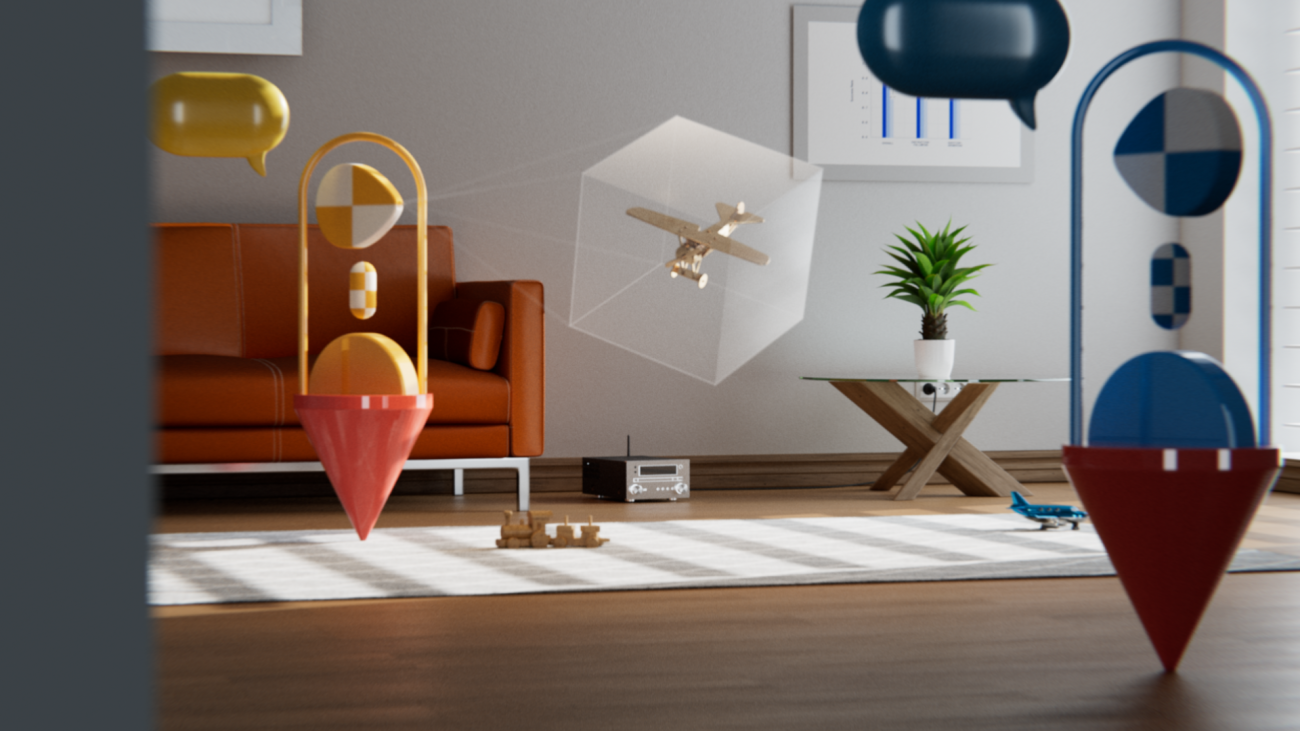Most artificial intelligence (AI) researchers now believe that writing computer code which can capture the nuances of situated interactions is impossible. Alternatively, modern machine learning (ML) researchers have focused on learning about these types of interactions from data. To explore these learning-based approaches and quickly build agents that can make sense of human instructions and safely perform actions in open-ended conditions, we created a research framework within a video game environment.Today, we’re publishing a paper [INSERT LINK] and collection of videos, showing our early steps in building video game AIs that can understand fuzzy human concepts – and therefore, can begin to interact with people on their own terms.Read More
Building interactive agents in video game worlds
Most artificial intelligence (AI) researchers now believe that writing computer code which can capture the nuances of situated interactions is impossible. Alternatively, modern machine learning (ML) researchers have focused on learning about these types of interactions from data. To explore these learning-based approaches and quickly build agents that can make sense of human instructions and safely perform actions in open-ended conditions, we created a research framework within a video game environment.Today, we’re publishing a paper [INSERT LINK] and collection of videos, showing our early steps in building video game AIs that can understand fuzzy human concepts – and therefore, can begin to interact with people on their own terms.Read More
Building interactive agents in video game worlds
Most artificial intelligence (AI) researchers now believe that writing computer code which can capture the nuances of situated interactions is impossible. Alternatively, modern machine learning (ML) researchers have focused on learning about these types of interactions from data. To explore these learning-based approaches and quickly build agents that can make sense of human instructions and safely perform actions in open-ended conditions, we created a research framework within a video game environment.Today, we’re publishing a paper [INSERT LINK] and collection of videos, showing our early steps in building video game AIs that can understand fuzzy human concepts – and therefore, can begin to interact with people on their own terms.Read More
Building interactive agents in video game worlds
Most artificial intelligence (AI) researchers now believe that writing computer code which can capture the nuances of situated interactions is impossible. Alternatively, modern machine learning (ML) researchers have focused on learning about these types of interactions from data. To explore these learning-based approaches and quickly build agents that can make sense of human instructions and safely perform actions in open-ended conditions, we created a research framework within a video game environment.Today, we’re publishing a paper [INSERT LINK] and collection of videos, showing our early steps in building video game AIs that can understand fuzzy human concepts – and therefore, can begin to interact with people on their own terms.Read More
Building interactive agents in video game worlds
Most artificial intelligence (AI) researchers now believe that writing computer code which can capture the nuances of situated interactions is impossible. Alternatively, modern machine learning (ML) researchers have focused on learning about these types of interactions from data. To explore these learning-based approaches and quickly build agents that can make sense of human instructions and safely perform actions in open-ended conditions, we created a research framework within a video game environment.Today, we’re publishing a paper [INSERT LINK] and collection of videos, showing our early steps in building video game AIs that can understand fuzzy human concepts – and therefore, can begin to interact with people on their own terms.Read More
Building interactive agents in video game worlds
Most artificial intelligence (AI) researchers now believe that writing computer code which can capture the nuances of situated interactions is impossible. Alternatively, modern machine learning (ML) researchers have focused on learning about these types of interactions from data. To explore these learning-based approaches and quickly build agents that can make sense of human instructions and safely perform actions in open-ended conditions, we created a research framework within a video game environment.Today, we’re publishing a paper [INSERT LINK] and collection of videos, showing our early steps in building video game AIs that can understand fuzzy human concepts – and therefore, can begin to interact with people on their own terms.Read More
Benchmarking the next generation of never-ending learners
Learning how to build upon knowledge by tapping 30 years of computer vision researchRead More
Benchmarking the next generation of never-ending learners
Learning how to build upon knowledge by tapping 30 years of computer vision researchRead More
Benchmarking the next generation of never-ending learners
Our new paper, NEVIS’22: A Stream of 100 Tasks Sampled From 30 Years of Computer Vision Research, proposes a playground to study the question of efficient knowledge transfer in a controlled and reproducible setting. The Never-Ending Visual classification Stream (NEVIS’22) is a benchmark stream in addition to an evaluation protocol, a set of initial baselines, and an open-source codebase. This package provides an opportunity for researchers to explore how models can continually build on their knowledge to learn future tasks more efficiently.Read More
Benchmarking the next generation of never-ending learners
Learning how to build upon knowledge by tapping 30 years of computer vision researchRead More





